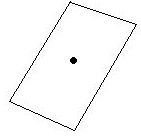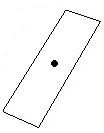 |
 |
|
I am currently working on a mapping program in which polygons, rectangles, circles, etc... are rotated, moved, and resized. Recently, I used the rotation conversion formula to rotate the items n degrees/radians by using the point and the center point of the shape.
|
|||
|
Anthony, It is not clear what you want. If you add the same number to each x coordinate, and another number to each y-coordinate you simply translate the original figure -- it retains its original size, shape, and orientation. If you want to add different numbers to different y-coordinates, you distort the figure in an unpredictable way. If you want to change the size of the figure you should multiply the x coordinate by a number b and the y coordinate by a number c. This stretches the figure out and increases (or decreases) the area by the factor bc. To maintain the shape of the figure, just let b = c. Chris To clarify my previous question...I am creating a computer program that will resize any polygon shape in a picture box, which has all positive X,Y coordinates beginning with (0,0).
and each (X,Y) coordinate for each vertex of the shape. Anthony, Suppose that the center has coordinates (c,d), s is the scaling factor in the x direction and t is the scaling factor in the y direction. For any point P with coordinates (x,y) you want to transform P by
Chris |
|||
 |
 |
 |

 Reduced Length
Reduced Length Reduced Width
Reduced Width